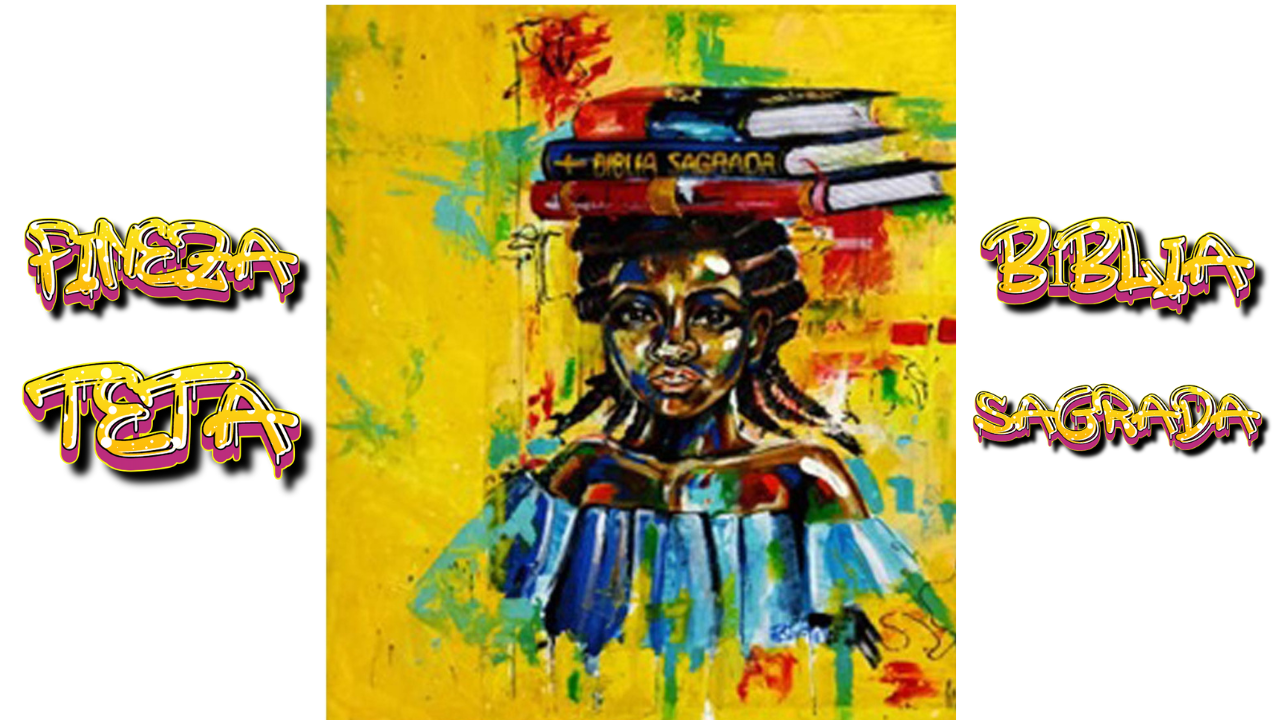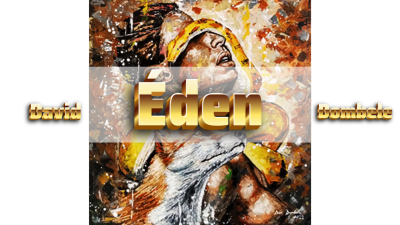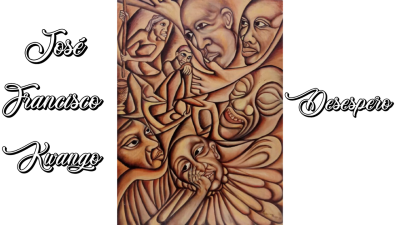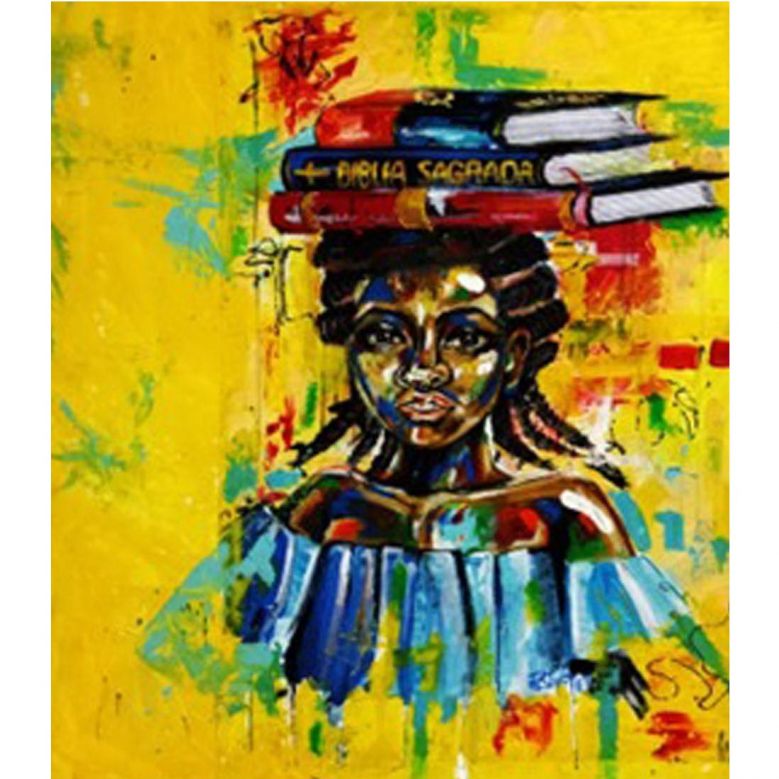
Fineza Teta is one of contemporary Angola's most compelling visual storytellers. Working primarily in abstraction, Teta uses a vibrant palette and dense, gestural textures to explore profound subjects, from the trauma of conflict to the transcendence of faith. Her work challenges viewers to look beyond the literal and find meaning in pure spiritual energy.
Among her most resonant pieces is "Bíblia Sagrada" (Holy Bible). This painting is not a literal depiction of scripture or a devotional scene; instead, Teta offers us a visual analogue for the experience of the sacred text-its complexity, its chaos, and its divine promise.
The Sacred Text Transformed
The tension in "Bíblia Sagrada" lies in the contrast between its literal title and its abstract execution. The Bible is a structured, linear text of laws, narratives, and prophecies. Teta dissolves this structure into a maelstrom of color, suggesting that the true power of the text is not in its paper and ink, but in the spiritual landscape it creates.
The canvas is typically dominated by high-key colors-perhaps deep reds suggesting sacrifice and human passion, brilliant golds and whites representing divine light and hope, and grounding blues or blacks symbolizing the void or foundational chaos. These colors clash and converge, often layered so thickly that the paint itself takes on the physical presence of aged parchment or rough, ancient stone.
Teta uses vigorous, sweeping brushstrokes that imply movement and urgency. It is as if the millennia of history, the thunder of prophecy, and the silent, personal revelation contained within the book are unfolding simultaneously in a singular, explosive moment. She captures the emotional totality of the scriptures-not just quiet reverence, but the drama of creation, conflict, and redemption.
Technique as Spiritual Energy
Teta's technique is central to the painting's spiritual impact. She often employs impasto-a technique where paint is laid on thickly-to create an almost sculptural surface. In "Bíblia Sagrada," these textures become tactile metaphors:
- Depth and History: The deep fissures and raised ridges represent the layers of interpretation and the historical weight carried by the sacred text.
- Light and Revelation: Brighter colors often catch the light on the peaks of the paint, creating moments of visual illumination that mimic spiritual insight or sudden grace.
- Internal Landscape: By removing all figurative elements, Teta forces the viewer to approach the Bible not as an external object of worship, but as an internal, deeply personal space-a landscape of the soul.
A Dialogue on Faith
"Bíblia Sagrada" ultimately serves as a powerful statement on African contemporary spirituality. Teta acknowledges the profound influence of Christianity while insisting on an interpretation that is vibrant, immediate, and utterly her own. It's a challenge to formalism and a celebration of faith as a living, dynamic force.
This piece is a necessary meditation for anyone seeking to understand how art can distill vast, complex ideas into a single, compelling visual experience. If you have the chance to encounter "Bíblia Sagrada," take a moment to look closely: it offers not just a picture of the Bible, but a feeling of the infinite.



















Comments